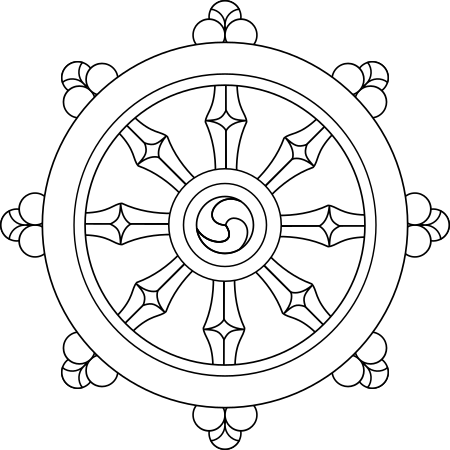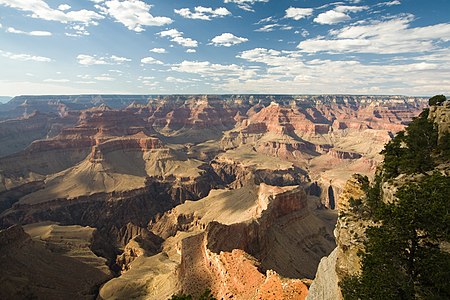Celtic Animism
|
Read other articles:

This template was considered for deletion on 2020 July 31. The result of the discussion was no consensus. United States Template‑class United States portalThis template is within the scope of WikiProject United States, a collaborative effort to improve the coverage of topics relating to the United States of America on Wikipedia. If you would like to participate, please visit the project page, where you can join the ongoing discussions. Template Usage Articles Requested! Become a Member Project…

Tunisian swimmer (born 1984) Oussama MellouliOussama Mellouli in 2013Personal informationNative nameأسامة الملوليFull nameOussama MellouliNickname(s)The Mediterranean's Shark, The Shark of Carthage, OusNationality TunisiaBorn (1984-02-16) 16 February 1984 (age 40)La Marsa, TunisiaHeight1.92 m (6 ft 4 in)Weight84 kg (185 lb)SportSportSwimmingStrokesFree, IMClub Esperance of TunisiaCollege teamUSC Trojans (USA) Medal record Olympic Games 200…

1621 book by Robert Burton This article is about the book by Robert Burton. For the album by Paradise Lost, see The Anatomy of Melancholy (album). The Anatomy of Melancholy Allegorical frontispiece to the 1628 third edition, engraved by Christian Le BlonAuthorRobert BurtonCountryEnglandLanguageEarly Modern EnglishGenreMedicine, philosophyPublication date1621, 1624, 1628, 1632, 1638, and 1651Media typePrintDewey Decimal616.89LC ClassPR2223 .A1 The Anatomy of Melancholy (full title: The …

NCAA Division II women's volleyball tournamentSportCollege indoor volleyballFounded1981Country United StatesMost recentchampion(s)Cal State Los Angeles (1st)Most titlesConcordia–Saint Paul (9)Official websiteNCAA.com The NCAA Division II women's volleyball tournament is the annual event that decides the championship contested by the NCAA. It determines the national champion of Division II women's collegiate volleyball. It has been held annually since 1981, typically played in December…

The Beatles' 1967 album Sgt. Pepper's Lonely Hearts Club Band has a widely recognized album cover that depicts several dozen celebrities and other images. The image was made by posing the Beatles in front of life-sized, black-and-white photographs pasted onto hardboard and hand-tinted.[1] Concept The cover image was created by Jann Haworth and Peter Blake, who in 1967 won the Grammy Award for Best Album Cover, Graphic Arts, for their work on it.[2] Blake has said that the intenti…

هذه المقالة يتيمة إذ تصل إليها مقالات أخرى قليلة جدًا. فضلًا، ساعد بإضافة وصلة إليها في مقالات متعلقة بها. (نوفمبر 2019) ليونيل سميث بيلي معلومات شخصية الميلاد 5 فبراير 1828 لندن الوفاة 28 مارس 1906 (78 سنة) لندن مواطنة المملكة المتحدة لبريطانيا العظمى وأيرلندا عض…

Интернет-цензура (англ. «Internet Censorship») — контроль и пресечение публикации или доступа к информации в сети Интернет. Своим появлением интернет-цензура обязана отсутствию каких-либо национальных границ в сети Интернет. Общую проблематику интернет-цензуры можно опреде�…

District in Cairo, Egypt For the locality in the Cassowary Coast Region, Australia, see Maadi, Queensland. For the archaeological site in Faiyum, Egypt, see Medinet Madi. District 12 in Cairo, EgyptMaadi المعادىDistrict 12Arabic transcription(s) • CommonAl-Ma‛adiMap of Maadi (inset: map of Egypt)MaadiLocation of Maadi in EgyptCoordinates: 29°58′3″N 31°15′0″E / 29.96750°N 31.25000°E / 29.96750; 31.25000CountryEgyptGovernorateCairoPopul…

斯奈爾斯群島斯奈爾斯群島斯奈爾斯群島斯奈爾斯群島在太平洋的位置地理坐标48°01′S 166°32′E / 48.017°S 166.533°E / -48.017; 166.533面積3.5平方公里(1.4平方英里)最高海拔130米(430英尺)管轄 新西蘭人口统计人口无人居住 斯奈爾斯群島和其他亞南極群島及紐西蘭南島的相對位置圖 斯奈爾斯群島(英語:Snares Islands,毛利語:Tini Heke)是位於南極海隸屬於紐…

Bagian dari seri tentangBuddhisme Awal Teks Buddhis Teks Buddhis Awal Bhāṇaka Tripiṭaka awal Nikāya Āgama Teks Buddhis Gandhāra Jataka Avadana Abhidharma Sidang Buddhis Pertama Kedua Ketiga Keempat Buddhisme Awal Buddhisme prasektarian → Aliran Buddhis awal Mahāsāṃghika Ekavyāvahārika Lokottaravāda Gokulika Bahuśrutīya Prajñaptivāda Caitika (Haimavata) Sthavira nikāya (Sthaviravāda) Pudgalavāda Vātsīputrīya Saṃmitīya Sarvāstivāda (Haimavata) (Kāśyapīya) (Mahī�…

Post-WW2 body regulating Ruhr coal and steel industries International Authority for the Ruhr1949–1952Map of the Ruhr region within Germany.StatusInternational bodyCapitalDüsseldorfHistorical eraCold War• London Six-Power Conference 28 April 1949• Treaty of Paris 18 April 1951• Disestablished 25 June 1952 Preceded by Succeeded by Western Allies Allied-occupied Germany Ruhr area European Coal and Steel Community 1 The London Agreement stipulates the location of a headquarte…

Instrumental composed by Erroll Garner MistyArtwork for US 7-inch singleSingle by Johnny Mathisfrom the album Heavenly B-sideThe Story of Our LoveReleasedSeptember 14, 1959RecordedApril 9, 1959StudioColumbia 30th Street Studio, New York CityLength3:38LabelColumbiaSongwriter(s)Johnny Burke, Erroll GarnerProducer(s)Mitch Miller, Al Ham[1]Johnny Mathis singles chronology Small World (1959) Misty (1959) The Best of Everything (1959) Misty is a jazz standard written in 1954 by pianist Erroll …

Malaysian government, 1999- Sixth Mahathir cabinet14th Cabinet of MalaysiaDate formed15 December 1999Date dissolved2 November 2003People and organisationsHead of stateTuanku Salahuddin Abdul Aziz Shah (1999–2001)Tuanku Syed Sirajuddin (2001–2003)Head of governmentMahathir MohamadDeputy head of governmentAbdullah Ahmad BadawiMember parties Barisan Nasional United Malays National Organisation Malaysian Chinese Association United Traditional Bumiputera Party Malaysian Indian Congress Malaysian …

1956 film by Daniel Mann The Teahouse of the August MoonTheatrical release posterDirected byDaniel MannWritten byJohn PatrickBased onThe Teahouse of the August Moon1951 novelby Vern J. SneiderProduced byJack CummingsStarringMarlon BrandoGlenn FordMachiko KyōEddie AlbertPaul FordHarry MorganCinematographyJohn AltonEdited byHarold F. KressMusic bySaul ChaplinJune HersheyKikuko KanaiDon SwanderKikuro KanaiProductioncompanyMetro-Goldwyn-MayerDistributed byLoew's Inc.Release date November 29,&#…

يفتقر محتوى هذه المقالة إلى الاستشهاد بمصادر. فضلاً، ساهم في تطوير هذه المقالة من خلال إضافة مصادر موثوق بها. أي معلومات غير موثقة يمكن التشكيك بها وإزالتها. (ديسمبر 2018) 1984 في الهندمعلومات عامةالسنة 1984 1983 في الهند 1985 في الهند تعديل - تعديل مصدري - تعديل ويكي بيانات سنوات 1982: 1983: …

Japanese inventor and industrialist Sakichi Toyoda豊田 佐吉BornMarch 19, 1867 (1867-03-19)Kosai, Shizuoka, JapanDiedOctober 30, 1930 (1930-10-31) (aged 63)Nagoya, Aichi, JapanOccupation(s)Founder, Toyota Boshoku Corporation, Toyota Industries, which eventually spawned the Toyota GroupChildrenAiko ToyodaKiichiro ToyodaRelativesEiji Toyoda (nephew) Japan portalTextile arts portalCars portalCompanies portalBiography portal Sakichi Toyoda (豊田 佐吉, Toyoda Sakichi, March 19(t…

Disambiguazione – Se stai cercando altri significati, vedi Arizona (disambigua). Arizonastato federato(EN) State of Arizona (dettagli) (dettagli) Arizona – VedutaGrand Canyon LocalizzazioneStato Stati Uniti AmministrazioneCapoluogoPhoenix GovernatoreKatie Hobbs (D) dal 2023 Data di istituzione14 febbraio 1912 TerritorioCoordinatedel capoluogo34°17′12″N 111°39′25″W34°17′12″N, 111°39′25″W (Arizona) Altitudine22 - 3 852 m s.l.m. Superficie2…

Changes to the Italian eastern border from 1920 to 1975. The Austrian Littoral, later renamed Julian March, which was assigned to Italy in 1920 with the Treaty of Rapallo (with adjustments of its border in 1924 after the Treaty of Rome) and which was then ceded to Yugoslavia in 1947 with the Treaty of Paris Areas annexed to Italy in 1920 and remained Italian even after 1947 Areas annexed to Italy in 1920, passed to the Free Territory of Trieste in 1947 with th…

Mathematical result on infinite trees For other uses, see König's theorem (disambiguation). This article includes a list of general references, but it lacks sufficient corresponding inline citations. Please help to improve this article by introducing more precise citations. (February 2021) (Learn how and when to remove this message) Kőnig's 1927 publication Kőnig's lemma or Kőnig's infinity lemma is a theorem in graph theory due to the Hungarian mathematician Dénes Kőnig who published it i…

本模板依照頁面品質評定標準无需评级。本Template属于下列维基专题范畴: 经济学专题 (获评模板級、不适用重要度) 经济学WikiProject:经济学Template:WikiProject Economics经济学条目 经济学主题查论编本Template属于经济学专题范畴,该专题旨在改善中文维基百科经济学类内容。如果您有意参与,请浏览专题主页、参与讨论,并完成相应的开放性任务。 模板 根据专�…


